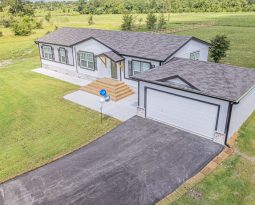How and Why Newer Manufactured Homes Survived Hurricane Ian Impressively
Veteran NPR reporter John Burnett checked in on how mobile/manufactured homes fared in Hurricane Ian. Burnett points to manufactured homes that were built after Hurricane Andrew wiped out entire South Florida mobile home communities in 1994.
In 1994, the U.S. Department of Housing and Urban Development raised the building standards for manufactured homes while also raising construction standards for other buildings.
So, how did the newer homes do in Hurricane Ian?
“Modern manufactured housing can be built to withstand 150 mph winds. Since the advent of post-Andrew wind standard, a mobile home on the Florida coast has to have double wall studs, double roof trusses, thicker nails, and double tie-downs anchored in concrete.”
Burnett looked at Parkhill Estates, a mobile 55-plus community that includes 176 homes:
The worst storm damage from Ian appears to be the slab-built clubhouse, not the manufactured homes.
“The structures themselves seem to be pretty durable compared with this hurricane,” says Murphy, who winters in Punta Gorda and spends summers at his house in Cincinnati. “Ninety-nine percent of the structures are still standing. There’s some siding off and some roof damage. The skirting came off a number of ‘em. But for the most part, they held up pretty well.”
The Manufactured Housing Institute, the national trade association for the factory-built housing industry, claims, “Manufactured homes are as safe as traditional homes during a storm, and in hurricane zones, the standards for manufactured homes are more stringent than regional and national building codes for site-built homes,” the group says. “The building materials in today’s manufactured home are the same as those used in site-built homes. The homes are engineered for wind safety based on the geographic region in which they are sold.”
Burnett says Florida is home to 822,000 mobile and manufactured homes, and almost two-thirds of them were built before 1994.
The manufactured home industry points journalists toward several research results.
- A study by Dr. K.R. Drosskopf at the University of Florida found that not one manufactured home built after the 1994 HUD Code changes were destroyed by four hurricanes that struck Florida in 2004. The same phenomenon occurred in the Gulf Coast region during Hurricane Katrina, with newer manufactured homes performing beyond expectations.
- In May 2001, Texas Tech University’s Wind Science & Engineering Center in Lubbock, Texas, conducted studies on the effects of strong winds on manufactured housing. A single-section manufactured home built to wind Zone1 standards was exposed to the prop wash of a C-130 transport aircraft which created winds in excess of 90 miles per hour. After prolonged exposure to such winds, the manufactured home experienced only limited damage, primarily loss of roofing shingles and some other minor damage.
- A 2014 Insurance Institute for Business & Home Safety (IBHS) test found that manufactured homes performed better at high winds than traditional-built homes when any attached structures are properly installed. It also suggests that improperly site-installed attached structures, like carports and patio awnings, are what cause about 80 percent of the damage in manufactured homes.
“I can attest to that last statement just based on my unscientific observations here in St. Petersburg, where I live,” said Burnett. “Even though we had competitively modest wind from Ian compared to Fort Myers, I saw several detached structures near my home destroyed by those tropical winds. It was clear they had been attached to a roofline and had no anchors. They acted like parachutes and captured the wind that lifted them right off.”







